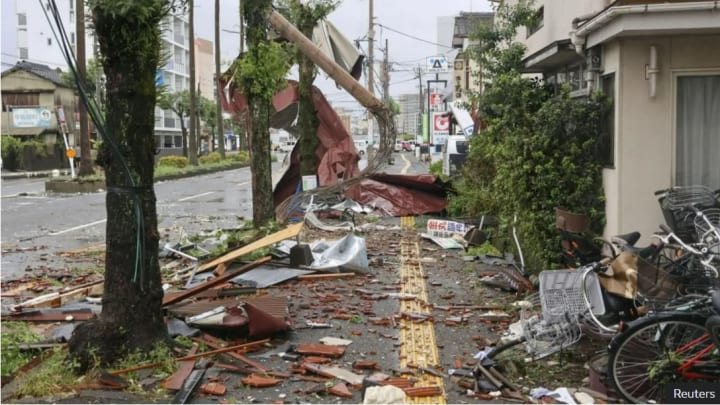Thousands Left Without Power As Japan Is Ravaged by Typhoon Shanshan

Just a few weeks ago, Japan had a scare when a megaquake warning was put in place following huge tremors being recorded. That scare ended up being tame, but the most recent phenomena that the region has dealt with have been more deadly.
Travel around and to the country has been complicated by typhoon Shanshan which made landfall in south-western Japan on Thursday.
The region has been hit hard as a ton of devastation has occurred. At least six people have been reported dead with injuries recorded being in the triple digits.
Even with Shanshan being downgraded to a tropical storm, heavy winds have persisted at 90 kilometers per hour, which is 56 miles per hour. As a result of the high winds and damage, thousands of people remain without electricity.
Warnings were issued to millions of residents in Kyushu of the highest level-five order as the storm approached Thursday with winds more than 2.5 times what was recorded as Shanshan got recognized as a tropical storm.
Despite not longer being categorized as a typhoon, Japan is still being battered by heavy rain in addition to the strong winds. Flooding and landslides could occur as a result, as residents are surprised at the path Shanshan has traveled.
"This is the first time I saw a typhoon sweeping across all of Japan," a resident in the capital, Tokyo, told Reuters news agency.
"Typhoons are supposed to go north from Okinawa. So, I didn't expect it to be like this. I'm very surprised."
The damage caused by Shanshan was substantial. Buildings were battered not only by high winds but also by debris as trees were ripped out of the ground and cars were flipped over in the flooded streets.
Domestic flights via Nippon Airways and Japan Airlines have all been canceled.
Travelers who planned to use the bullet train this weekend between Tokyo and Osaka will have to adjust their itineraries as services are being impacted as well. Shinkansen bullet trains in Nagoya have also been suspended with the potential for more cancelations.
The last time a warning of this level was issued in Japan was in September 2022, also in Kyushu. It was the first time that such a warning was needed outside of Okinawa.
